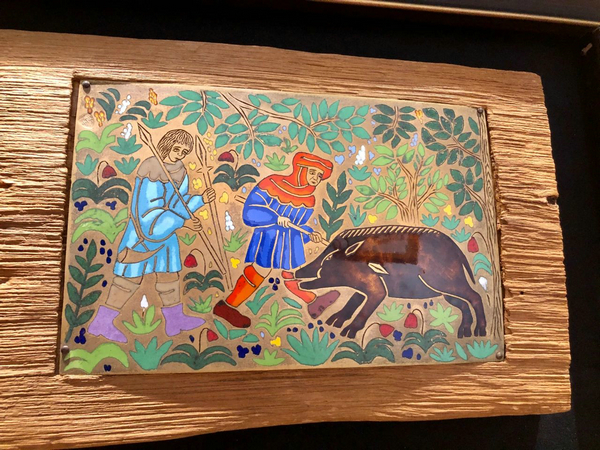Enamel art exhibition highlights Sino-French craftsmanship exchange
By Yang Xiaoyu | chinadaily.com.cn | Updated: 2023-06-16 16:31

Vibrant, glossy and shimmering — such qualities of enamel have enthralled many visitors to The Shining Moments in Life, a contemporary enamel art exhibition that opened on Saturday at Beijing's Alliance Francaise (Guangcai Center).
On display are dozens of artworks spanning miniature paintings, installations, jewelry and watch dials — all featuring vitreous enamel — created by seven Chinese artists and two French artists.
A type of powdered glass that is specially manufactured for enameling, enamel can be sieved directly or ground and washed, then applied to a metal surface and fired in a kiln with a temperature between 700 and 800 degrees Celsius. The enamel then melts and fuses to the metal, which creates stunning jewelry and decorative pieces.
It is believed that the earliest colors of enamel were meant to replicate specific gemstones. The earliest-known enamel pieces date back as far as the 13th century BC when Mycenaean goldsmiths inlaid enamel into gold rings.
“Vitreous enameling is a highly-demanding craft fusing both science and art, which requires rapt attention to detail and huge patience,” said Zheng Chun, who co-curated the exhibition with Wei Yun, a participating artist.
“However, it is also a magical craft. Once enthralled, enamellists can spend hours or days on end in their studios to create a single piece,” she added.

The exhibit is made possible because of an enameling workshop held by French enamellist and jeweler Jean Francois Dehays 10 years ago in Beijing as all the participating Chinese artists were trained by him, according to the exhibit’s co-producer Li Jin, a freelance art journalist who manages the WeChat-based blog CCARTWALK.
Li noted that, even though enameling is an ancient craft and was introduced to China in the late 13th century, giving rise to the local enameling craft known as Jingtailan, still little remains known to the contemporary public.
Jingtailan is essentially cloisonné, a major enameling technique that entails affixing thin metal strips to the pre-drawn surface of a metal object. This creates many small compartments — the French cloisons means partitions — into which a paste of finely ground, colored glass and water is placed. The piece is then fired, turning the glass into enamel and fusing it with the metal.
























